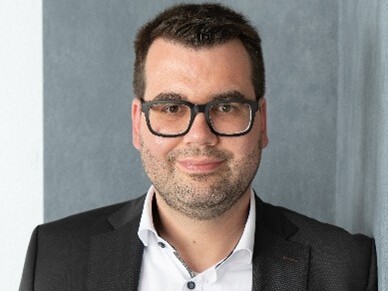
Turnaround – From crisis mode to a self-healing organization

The automotive industry is one of the mainstays of the German economy. However, this model of success has been faltering for several years now. Increasing competitive pressure (especially from China), rising energy and material prices, a shortage of skilled workers, changing customer requirements, and the shift toward e-mobility are putting increasing pressure on manufacturers and suppliers. In many companies, the situation is becoming increasingly critical: efficiency is declining, backlogs are growing, and special costs are exploding. Production problems turn into delivery problems and ultimately into financial problems.
Those who fail to take consistent countermeasures risk more than just weak key figures: they risk losing customers, market share, trust—and in extreme cases, the very existence of entire locations. At a certain point, the situation tips over: firefighting dominates everyday life, customer orders are put at risk, and financial stability is shaken. The press regularly reports examples of this – plants that must be closed despite massive efforts, as well as cases where the turnaround is achieved in time. What happens is not fate; the difference lies in action: Are the problems identified early enough and is a turnaround initiated and consistently implemented in time?
Operational and financial problems are interrelated
When a plant starts to falter, the damage is always twofold: operational problems such as backlogs and quality defects lead to operational inefficiencies and, as a result, to rising costs. Special freight charges, overtime, and contractual penalties exacerbate the situation and further destabilize the plant financially. Conversely, financial bottlenecks take the wind out of production's sails. Looking at only one of these aspects to find solutions is not enough. A turnaround can only succeed if operational and financial measures are conceived and implemented together from the outset. Ad hoc measures are often unavoidable, but they consume enormous resources and delay the financial turnaround. For this reason, H&C's turnaround approach is based on a comprehensive analysis and involvement of the organization, combining operational and financial turnaround.
Our approach: Clarity is the first step to a self-healing organization
A successful turnaround follows a clear logic that we implement consistently and pragmatically:
- Creating clarity: Only a shared understanding of the situation enables targeted decisions. Financially, this means transparency regarding cash flow, P&L, and cost drivers; at the operational level, an overview of productivity, losses, and personnel structure is important.
- Mitigate risks to quickly bring acute bottlenecks under control: Financial risks are minimized to secure liquidity and control cash flows. Meanwhile, operational risk management ensures delivery capability, stabilizes supply chains, and secures resources.
- Set priorities: Instead of endless lists of measures, H&C focuses on the decisive levers for solving financial and operational problems. We create a financial roadmap for improving results and rely on clear communication with stakeholders. On the operational side, we identify the key issues and define implementation steps with measurable milestones.
- Implementation means working directly with the teams on the shop floor: stabilizing processes, increasing productivity, and adjusting cost structures.
- Anchoring changes for the long term brings success: A successful turnaround ends reactive crisis mode and builds a self-healing organization that recognizes deviations early on, solves problems independently, and continuously improves.
Acting and solving problems instead of developing concepts
We are not PowerPoint consultants. H&C teams consist of implementation consultants with industry experience. We work on an equal footing and shoulder to shoulder with plant managers and teams, right where the problems arise. Our aim is not only to develop concepts, but also to secure results.
Here's how it works in practice: At a European assembly plant, H&C consultants and customer employees increased OEE by more than 50% within a few months. Backlogs were eliminated, special freight charges were eliminated, and a third shift became unnecessary. This proves that short-term problem solving is only the beginning and that sustainable structures make the difference.
From crisis mode to future viability
Turnarounds almost always begin with firefighting. But the changes must not end there. Those who remain in crisis mode for too long burn through resources – both operational and financial. The decisive step is the transition: from merely reacting to becoming a stable, self-healing organization. This is exactly what Horn & Company stands for: We come when there is a fire – and we don't leave until the plant is running smoothly again.




